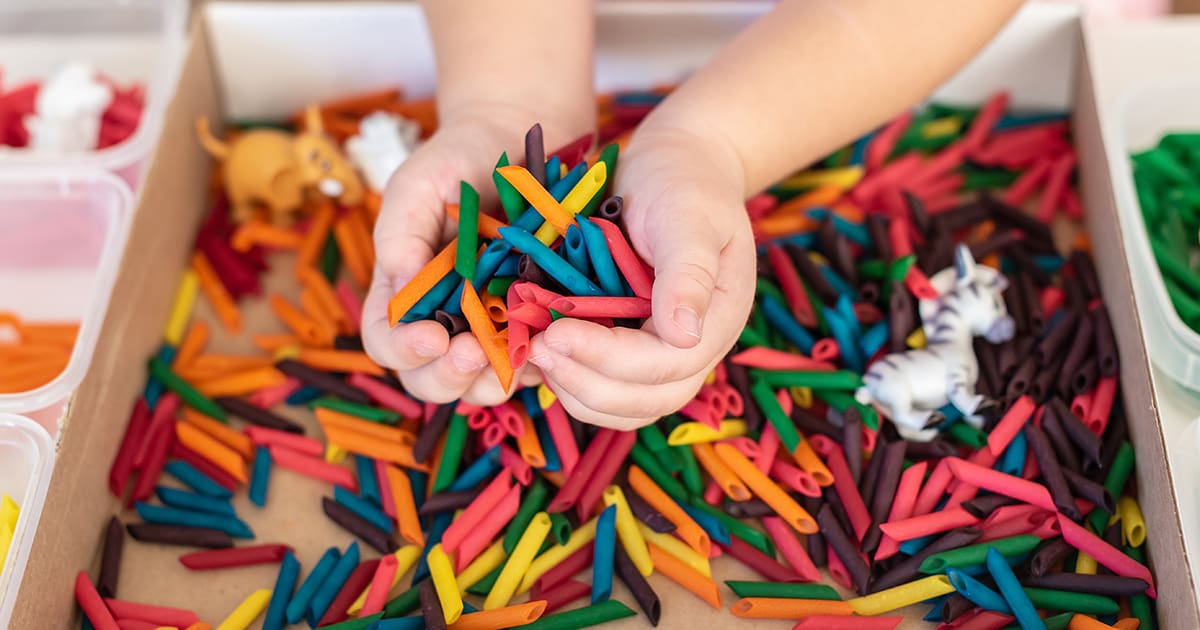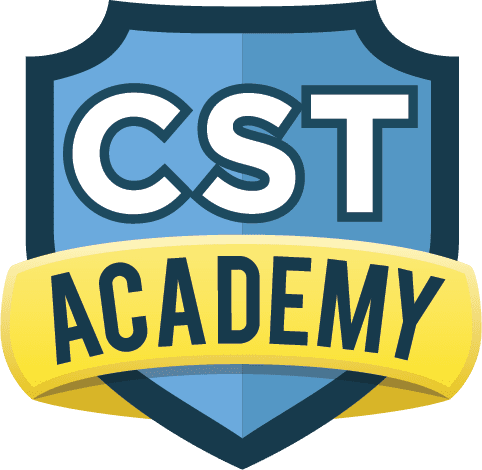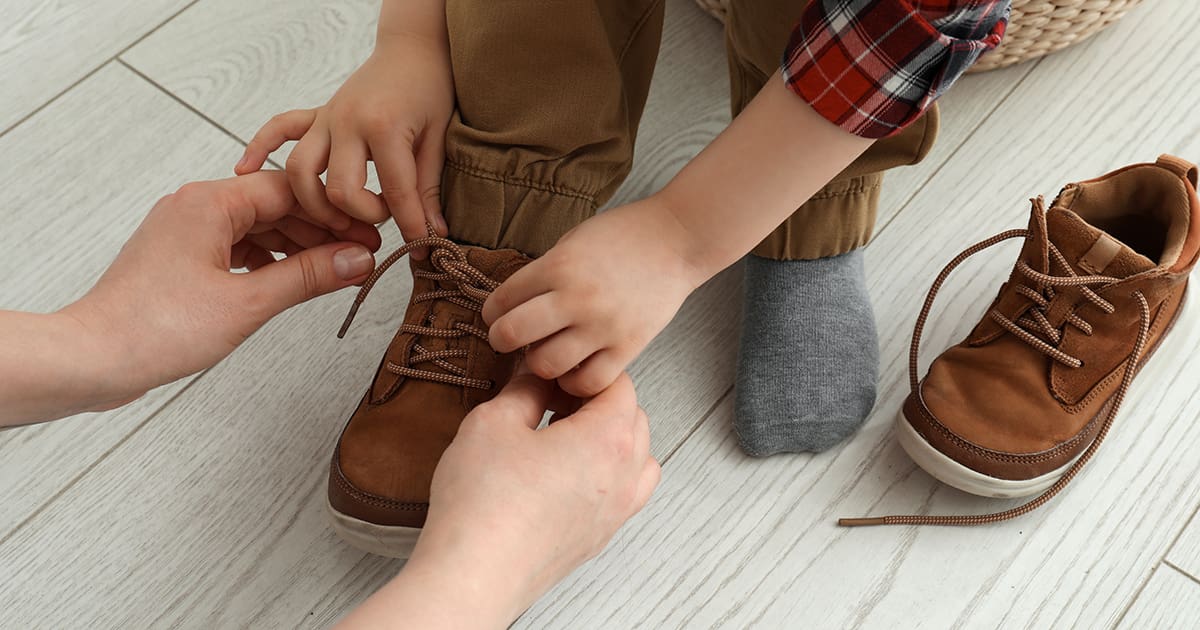Share this Post

Tactile play is one of the most powerful tools for helping children learn, grow, and connect with the world around them. From squishing playdough to exploring textured sensory bins, these hands-on activities are more than just fun—they provide critical opportunities for developing fine motor skills, emotional regulation, sensory processing, and creativity.
For children with autism or developmental delays, tactile play can be especially transformative. At CST Academy, we integrate tactile play into our therapeutic preschool programs to create engaging, supportive environments where children can thrive. By focusing on individual needs and strengths, our team helps children build the skills they need to succeed while fostering confidence and joy.
What Is Tactile Play?
Tactile play refers to activities that involve hands-on interaction with a variety of textures, materials, and objects. It’s all about engaging a child’s sense of touch to encourage exploration, creativity, and learning. Examples of tactile play include:
- Squishing, molding, or rolling playdough or clay.
- Running fingers through rice, beans, or water beads in sensory bins.
- Exploring textured surfaces like sandpaper, sponges, or fabric.
- Using fingers to paint or draw in shaving cream, sand, or finger paint.
- Building with kinetic sand or other moldable materials.
These activities provide rich sensory experiences that support many areas of a child’s development.
The Benefits of Tactile Play for Children
Tactile play isn’t just fun—it’s an essential part of early development that can help children build a wide range of skills. Some of the key benefits include:
- Improving Fine Motor Skills
Manipulating small objects and materials strengthens the muscles in a child’s hands and fingers, preparing them for tasks like writing, cutting, or buttoning clothes. - Enhancing Sensory Processing
Children with autism or sensory sensitivities often face challenges with how they process touch. Tactile play provides safe opportunities to explore new sensations, helping them feel more comfortable and regulated in their environment. - Promoting Emotional Regulation
The repetitive, calming nature of tactile activities like kneading dough or sifting through sand can help children manage anxiety, frustration, or overstimulation. - Encouraging Creativity and Problem-Solving
Open-ended tactile play allows children to experiment and explore, fostering creativity and cognitive development as they figure out how materials work and interact. - Building Social Skills
Many tactile play activities can be done in pairs or groups, encouraging collaboration, sharing, and communication among peers.
At CST Academy, tactile play is a cornerstone of our therapeutic approach because it provides a natural and enjoyable way for children to build these foundational skills.
How CST Academy Incorporates Tactile Play into Therapy
At CST Academy, we understand the unique needs of children with autism and developmental delays, and we design our programs to integrate tactile play in meaningful ways. Here’s how we use tactile play to support growth:
- Individualized Sensory Plans
Every child’s sensory preferences and sensitivities are different. Our occupational therapists work with families to create individualized sensory plans that incorporate tactile activities tailored to each child’s needs. - Engaging Sensory Bins
Sensory bins are a favorite tool at CST Academy. Filled with materials like rice, beans, or water beads, these bins encourage children to explore textures, practice fine motor skills, and engage in imaginative play. - Play-Based Therapy Sessions
We use tactile materials like playdough, foam, or textured balls during therapy sessions to help children achieve developmental goals while staying engaged and motivated. - Collaborative Group Activities
Group activities like building sandcastles, creating art with finger paint, or exploring sensory pathways allow children to practice social skills while engaging in tactile play. - Parent Involvement
We believe in empowering families to continue tactile play at home. Our therapists provide parents with ideas, tools, and strategies to create tactile experiences that support their child’s progress outside of therapy.
Tips for Tactile Play at Home
Parents can easily incorporate tactile play into everyday routines to support their child’s development. Here are some simple, fun ideas to try:
- DIY Sensory Bins: Fill a bin with materials like rice, pasta, or pom-poms, and hide small toys or objects for your child to find.
- Finger Painting Fun: Let your child create colorful artwork using finger paints or pudding. This is a great way to explore textures and express creativity.
- Playdough Creations: Encourage your child to mold, roll, or cut shapes with playdough or clay to strengthen fine motor skills.
- Water Play: Set up a water table or a tub with cups, sponges, and small toys for your child to explore pouring, squeezing, and splashing.
- Textured Art Projects: Use materials like fabric, sandpaper, or bubble wrap to create tactile collages or crafts.
By making tactile play a regular part of your child’s routine, you can support their development while enjoying quality time together.
Why Families Choose CST Academy for Sensory Support
CST Academy is a trusted partner for families seeking compassionate, individualized care for their children. Here’s why families rely on us to support sensory development through tactile play:
- Expert Team: Our occupational therapists specialize in sensory integration and fine motor development.
- Tailored Programs: Every child receives a customized plan designed to meet their unique sensory and developmental needs.
- Inclusive Environment: Our classrooms are sensory-friendly spaces where children feel safe and supported as they explore tactile activities.
- Family Collaboration: We work closely with parents to ensure progress extends beyond therapy and into everyday life.
Celebrating Progress Through Tactile Play
One CST Academy parent shared:
“Tactile play has made such a difference for our child. The therapists at CST Academy introduced activities that not only helped with fine motor skills but also gave our child a way to relax and have fun. The progress we’ve seen has been incredible.”
Take the Next Step with CST Academy
At CST Academy, we believe in the power of tactile play to unlock growth and potential in every child. Whether your child is building motor skills, regulating sensory input, or exploring creativity, our team is here to guide and support them every step of the way.
Contact us today to learn more about our programs and how tactile play can help your child thrive. Together, we’ll create a brighter future filled with growth, learning, and joy.
Discover Our Pediatric Therapy & Autism Care
ABA Therapy
Support for children with autism.
Diagnostic Evaluation
Expert assessments to identify child needs.
Pediatric Therapy Services
Speech, Occupational, Feeding, and Physical Therapy.
Therapeutic Preschool & Kindergarten
A classroom environment designed for early learners with unique needs.

Find the Best Care for Your Child




